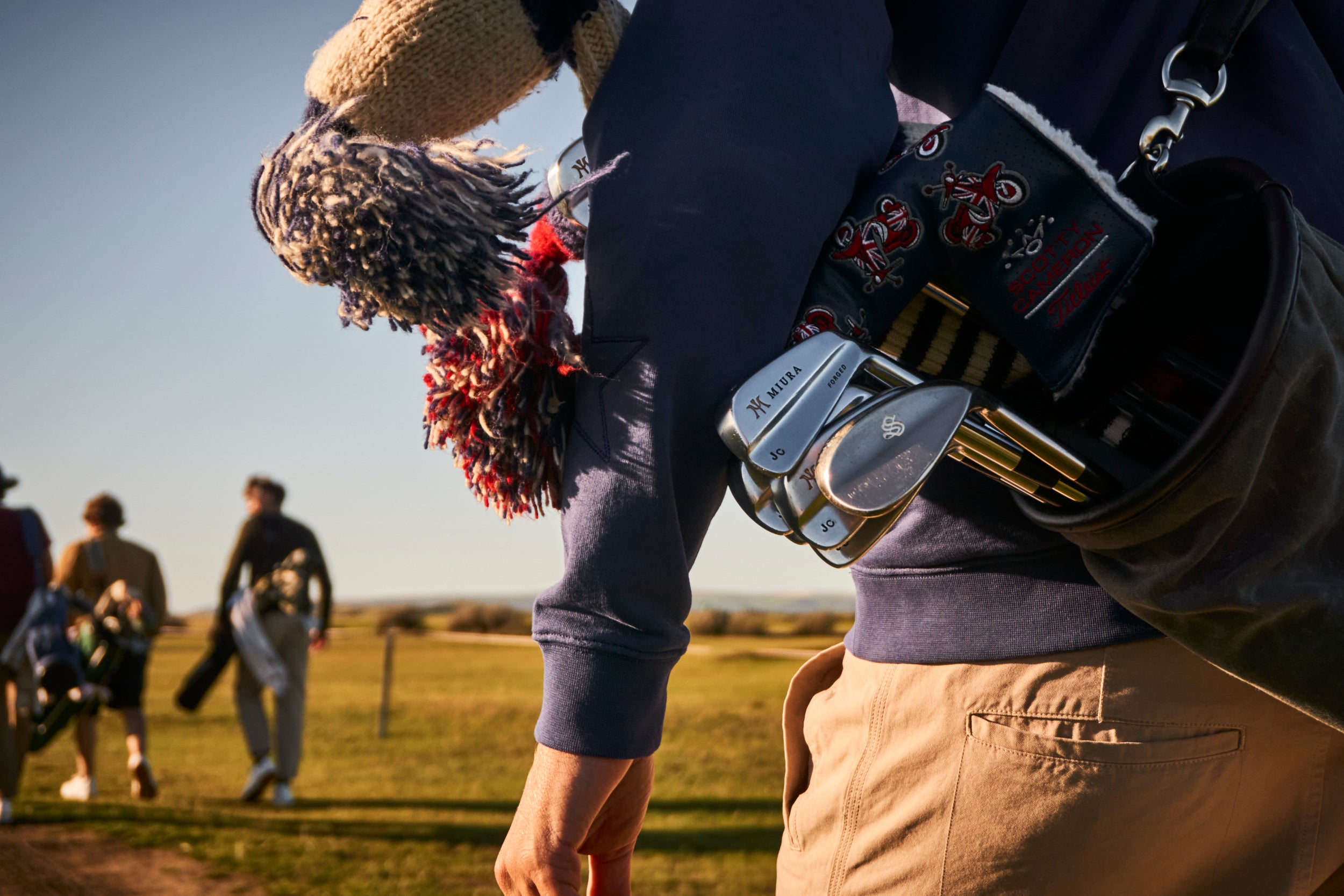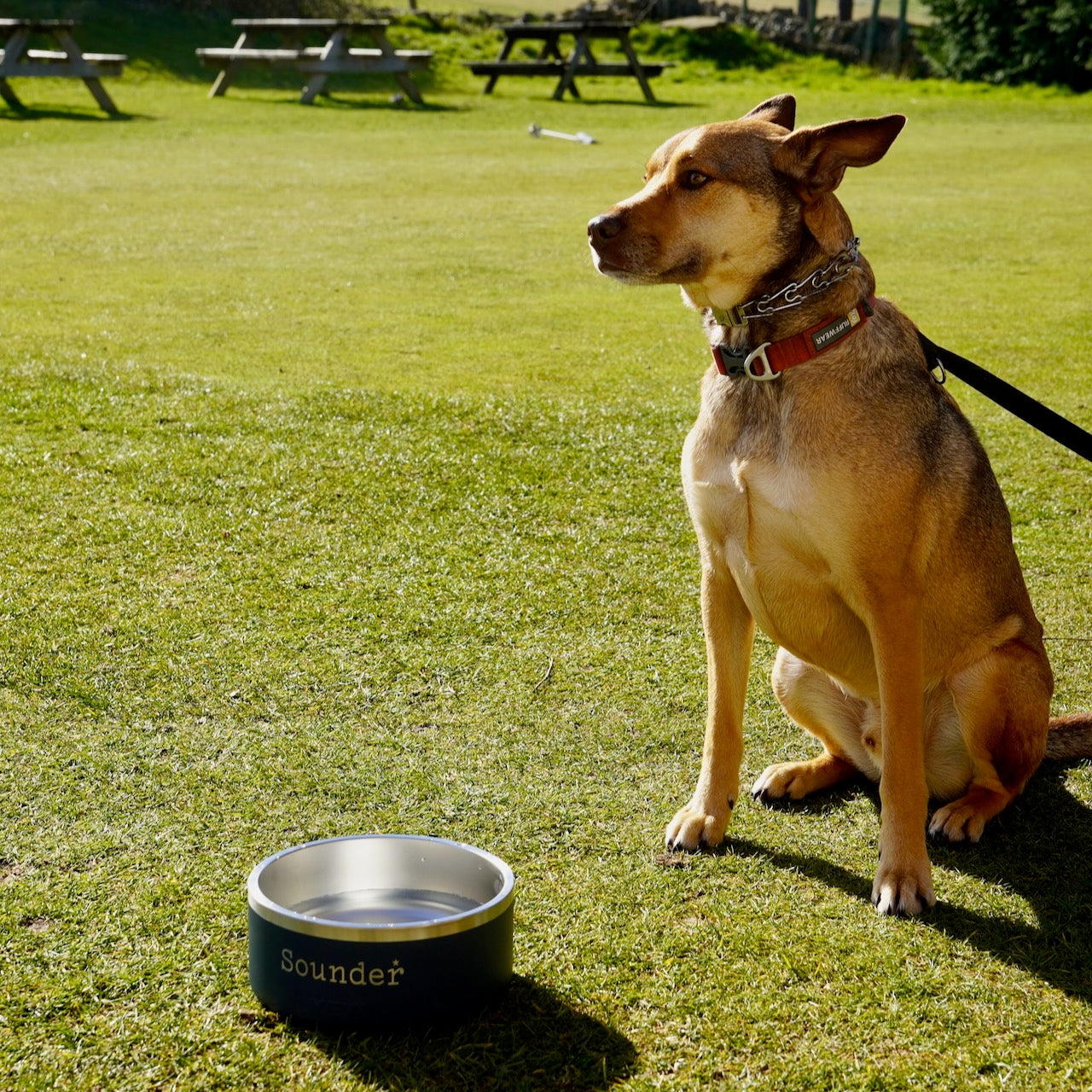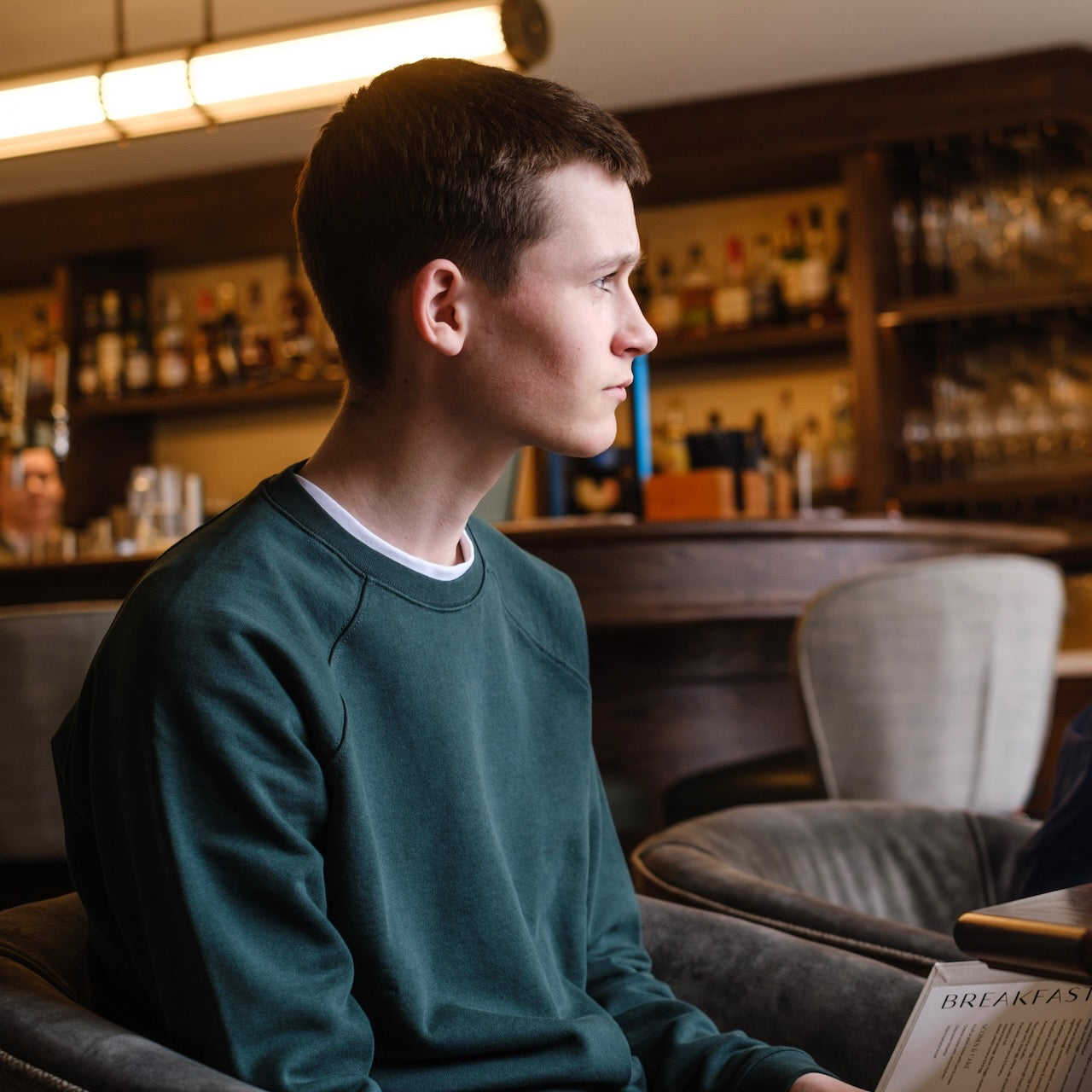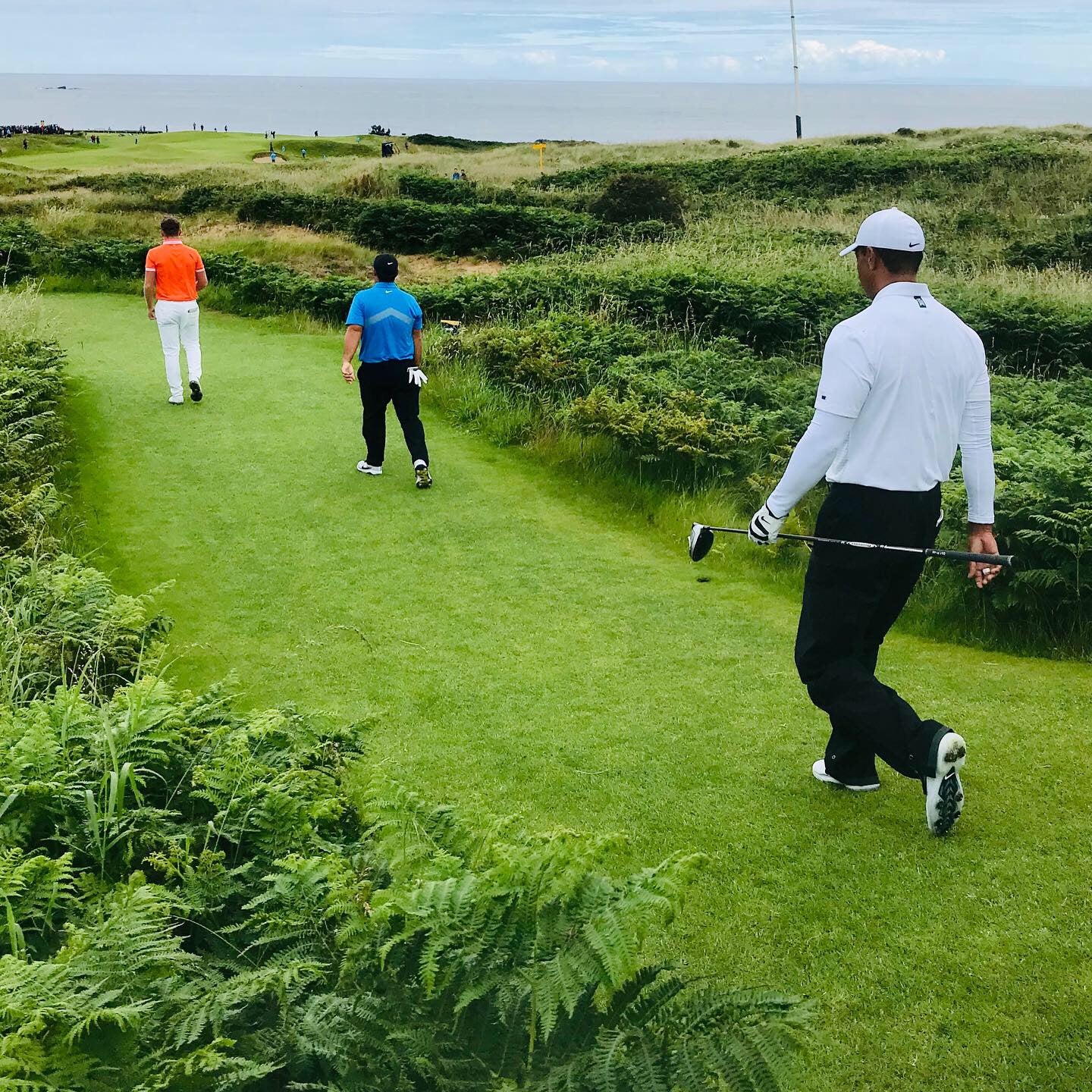Tiger Woods doesn’t play that much golf, and much less still in the British Isles. If we get to see him in the flesh once a year, we’re lucky. For most, the experience tends to be a disjointed sequence of snapshots — a glint of iron being held on his follow-through, the click of his putter making contact and a momentary glimpse of the ball on its way to the hole, or, if you’re lucky, a snatched view of the man himself, marching towards his next assignment, oblivious to everyone and everything, locked in a tower of his own concentration and, well, otherness.
When the greatest player of his generation, arguably any generation, and the reigning Masters champion, came in to face the press two days before the start of the Open Championship at Royal Portrush, it was a surprise to no-one that there wasn’t an empty seat in the media centre. I had heard whispers in the run-up the tournament that he was in a bad way, struggling with his back and pain levels that no elite athlete could reasonably be expected to play through. To someone like me, who had not clapped eyes on Tiger in the flesh in years, he looked a bit distant, disconnected. Dulled, you might say.
When he was asked about what impact the colder weather might have on his back, his answer was revealing, particularly in light of the masterclass in control he had put on in the final round at Augusta. “It's just part of, unfortunately, dealing with the procedures I've had, and being a little bit older,” he said. “It just doesn't move quite as fast when it's a little bit cooler. But the great thing is playing in an Open Championship, you can do it. Look what Tom [Watson] did at Turnberry, what Greg [Norman] did at Birkdale. The golf course is fast enough — you don't have the speed to carry the ball 20 yards anymore, you can still run the ball quite a bit out there.” Here was a 43-year-old, a winner of a major championship just three months earlier, comparing himself to players 26 and 20 years older than himself.
Tiger went on to answer questions about the new scheduling for the four majors, and how the Open probably represented his best chance, outside the Masters, to add to his tally of 15 majors. He looked tired and uncomfortable, although there were still flashes of humour. I was happy to see him, particularly given the way he was talking: “I want to play here as long as I possibly can. And you have to understand, if I play a lot, I won't be out here that long. So, it’s understanding how much I can play, prepping how much I do at home and getting ready. And that's the tricky part — trying to determine how much tournament play I need to get the feel for the shots and also understanding where my body is.”
On day one his body was somewhere else. He shot 78, seven over par, and was understandably a little irritable when asked about his round. He’d missed a lot of shots left and seemed to be hitting the ball out of the heel. Was he in pain? Silly question: “I’m sore, yes. I'm sore,” he replied. Was this the worst his back had felt since the Masters? “If I’m at home and have school pick-up and soccer practices, I'm a lot more sore than I am now,” he said. “But playing at this elite level is a completely different deal. You’ve got to be spot on. These guys are too good, there are too many guys that are playing well and I'm just not one of them.”
Was he fit enough to tee it up on Friday? Of course. Tiger Woods, a three-time Open champion, would be out there, grinding as hard as he always did. Questions answered, he left to get more treatment on his back.
On Friday, the weather on the Antrim coast was a little better. I had the luxury of a press armband, which allows you inside the ropes, so I decided to walk with Tiger for the full 18. How often do you get to witness a master at work, even one who so debilitated? On the first hole, a statement of intent: a snaking downhill putt for birdie, which dived into the hole to cheers from those ringing the green. It seemed possible that something other than his back might have clicked.

Tiger Woods and Joe LaCava at the 2019 Open Championship
Tiger was still walking gingerly but the grimaces after impact had gone. His game-face was as stony as ever but at least he was putting the ball in play. He said that he had tried to ‘piece together a swing’ for his opening round, but the changes he’d made on the practice ground before his tee time on Friday — he appeared to be standing more open at address — were allowing him to get through the ball, not least with his driver, which he went after on a number of occasions. He was also moving the ball both ways in the air and controlling its trajectory. The sound of Tiger Woods hitting a golf ball still sounded like music, almost 20 years after I’d first heard it at the 1999 Ryder Cup at Brookline.
He gave himself good looks for birdies at 4 and 5 before finally getting to two-under for the round with a 20-foot putt up and over a swale on the par-3 6th. A superb drive down the majestic new par-5 7th suggested he was about to go on a charge but his second shot was wild, pulled wide and left of the green. As the marshals ushered the crowds back, Woods used his 5-wood for support as he negotiated the uneven terrain off the fairway. The grimace briefly reappeared, further evidence of why it was imperative for him to be playing from the cut grass. A duffed chip from the rough, and a poor approach putt from a hollow turned a probably birdie into a damaging bogey. Back to six over for the tournament.
An imperious approach set up a great chance on the par-4 9th but he failed to convert. On the 10th, he struck another glorious iron to 12 feet and this time managed to make the putt. The par-4 11th hole, a dog-leg par-5 for the members, had played the hardest on the course of the first day. Tiger made it look easy, smashing his drive into the first cut of rough and then playing another stunning iron shot, which brought the ball to a stop six feet above the hole. The putt never looked anywhere but in.
At three-under-par for the day, and four over the tournament, the par-5 12th presented an obvious opportunity to take another step towards the cut line. "Tiger, I love you," shouted a woman as he climbed carefully to the tee. "Thank you," he mouthed, a rare smile breaking through the game face. Unable to reach the green, his chip shot was poor by his standards and he departed with a disappointing par.
The next three holes were played in par, and the momentum had gone. his last offering of rare beauty came from the tee on ‘Calamity’, the epic par-3 16th— a piercing, low fade that screamed over the abyss before finding the left side of the green. The birdie putt stayed out, confirmation that the mojo had gone. Two closing bogeys were unnecessary insults to what had been a brave and typically absorbing display, particularly in the circumstances.
After holing out for his five on the 18th green, Tiger raised his cap to the grandstands as thousands rose to salute him. The Irish fans had witnessed a limp rather than a charge, and yet Tiger had still come close to defying his ailments and the laws of probability.
A few minutes later, he talked briefly about how he had prepared for the challenge, and referenced Ben Hogan, which, in light of his recent car crash, takes on a bleaker irony. "Let's be honest, I don't have the flexibility I used to have, and never will," said Tiger, standing before a gaggle of reporters 200 yards from the huge grandstands. "I'm going to have to make those adaptations. If you look at what Hogan did with his setup, it looked not square at all, but he was able to flush it."
However bad his body felt, he could not mask his disappointment at missing the cut. "It’s more frustrating than anything else," admitted the ultimate competitor. "This is a major championship and I love playing in these events. I love the atmosphere and I love the stress of playing in majors."
I am glad I took that opportunity to observe the maestro at work, especially at such close quarters. It didn’t matter that he was well below his best or that his opening 78 meant it was highly unlikely that he was going to be a factor in the championship. The experience amounted to a revealing study of one proud competitor battling against the dying of the light rather than against those at the top of leaderboards, and it was a privilege.
Read more

From black and white archive footage to the latest drone-enabled course reviews, our social media guru Charlie Lemay digs out some golfing gems from YouTube to help you through the last few weeks o...

The idea for Sounder was forged in the workshop where James Day has spent 20 years searching for golfing nirvana - the perfect combination of aesthetics, functionality and feeling.




